 Do you want to know why it's important to maintain a Facebook presence?
Do you want to know why it's important to maintain a Facebook presence?
Have you seen the latest research on Facebook?
Knowing how Facebook affects online marketing can improve your own efforts.
These five studies reveal how Facebook impacts online marketing and why it's here to stay.
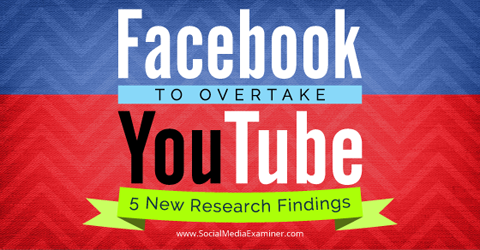
Listen to this article:
Where to subscribe: Apple Podcasts | Spotify | YouTube Music | YouTube | Amazon Music | RSS
You can also subscribe via RSS, Stitcher and iTunes. How to subscribe/review on iPhone.
#1: Facebook Drives Four Times More Traffic Than Competitors
According to October 2014's Shareaholic Social Media Traffic Report, website analytics reveal that social referrals come from Facebook four times more frequently than its nearest competitor, Pinterest.
Take a look:
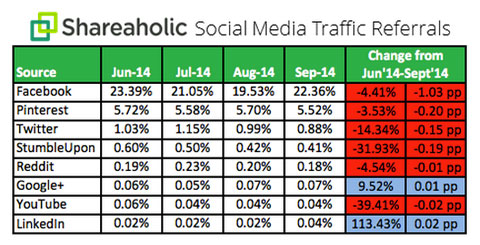
Shareaholic tracked the eight most popular social media networks. The chart below puts Facebook's dominance into relief in one glance.
Pinterest, Twitter, Tumblr, StumbleUpon, Reddit and YouTube all sent FEWER visitors to websites in Q3 than they did in Q2. In fact, proving its current influence, Facebook's share of sending traffic to websites increased by 115% in just over a year.
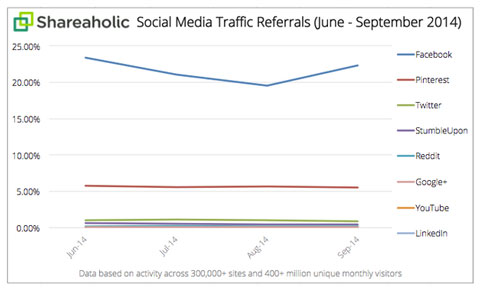
In fact, the difference between Facebook and its competitors is so dramatic that the study's authors term LinkedIn, Tumblr, StumbleUpon, Reddit and YouTube “forgettable” sources of traffic because they drive less than 1% of traffic to websites COMBINED. So much for those saying that Facebook is sunk without a teen audience.
Getting prospects to a website is one of the primary duties of social media. Boosting lead generation using social media enables companies to capture email addresses with “form-gated” content such as reports, ebooks and how-to guides that live on the website.
Key Takeaway
Facebook's efforts to remain ubiquitous have paid off with fully measurable website traffic metrics that impress a company's bean counters, owners and marketing managers.
Get World-Class Marketing Training — All Year Long!
Are you facing doubt, uncertainty, or overwhelm? The Social Media Marketing Society can help.
Each month, you’ll receive training from trusted marketing experts, covering everything from AI to organic social marketing. When you join, you’ll also get immediate access to:
- A library of 100+ marketing trainings
- A community of like-minded marketers
- Monthly online community meetups
- Relevant news and trends updates
#2: Facebook Poised to Surpass YouTube in Direct Video Uploads
In a survey of 180,000 videos across 20,000 Facebook pages, social media software and analytics company Socialbakers found that content creators uploaded 50% more videos to Facebook directly in June 2014 than they did in January.
The trend is positive enough for the study authors to predict that the number of videos uploaded directly to Facebook will surpass those uploaded directly to YouTube by the end of this year. Considering that YouTube exists as a video-sharing platform, those numbers have taken many by surprise.
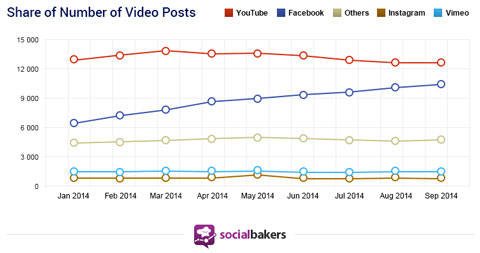
The chart above shows that in January, direct video uploads to YouTube outnumbered those to Facebook by nearly 200%. Just six months later, however, Facebook had closed that gap to less than 15%, an amazingly rapid advance.
Why are content creators (business owners, marketers, non-profits and more) abandoning YouTube for Facebook? Facebook consistently outperforms YouTube in getting views and engagement.
If more individuals respond on Facebook, others at the top of the funnel will be more likely to engage as well. Social proof—whether it's a line out the door at a bakery or likes, comments and shares on a platform—drives sales. Moreover, engagement serves as a key metric, demonstrating to stakeholders that social content is reaching and influencing the target audience.
Facebook executives haven't missed this rapid shift. Clearly thrilled with the increase in direct video uploads over the first six months of 2014 (see their announcement here), they decided to fuel this trend by personalizing each news feed based on video-watching preferences.
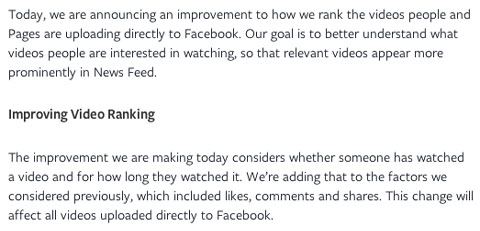
Those who watch videos regularly will see more at the top of their news feed. Those who skip the videos won't see as many because Facebook will move them down to the bottom of the feed.
Key Takeaways
If you're going to upload a video to Facebook, research which of your previous videos and those of your competitors get the most views and likes. Facebook is watching your video's performance.
Consider including fun and entertaining components that have proven appeal to Facebook audiences.

Discover Proven Marketing Strategies and Tips
Want to go even deeper with your marketing? Check out the Social Media Marketing Podcast! Publishing weekly since 2012, the Social Media Marketing Podcast helps you navigate the constantly changing marketing jungle, with expert interviews from marketing pros.
But don’t let the name fool you. This show is about a lot more than just social media marketing. With over 600 episodes and millions of downloads each year, this show has been a trusted source for marketers for well over a decade.
#3: Facebook Most Popular Social Site on Mobile
Predicted for a long time, consumption of content on mobile has edged out that on desktops for overall time online, according to a study conducted by comScore conducted in May 2014. Smartphones and tablets combined now account for 60% of all time spent online.
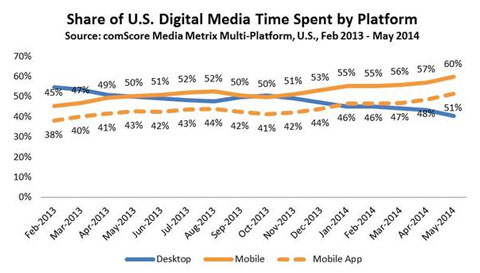
In keeping with these findings, consumers access their social media channels 71% of the time through mobile. Twenty-four percent of total social networking engagement occurs on Facebook, making it the leading mobile social platform.
Rather than remaining satisfied with this current advantage, however, Facebook is devoting its significant resources into keeping and expanding it.
Facebook is aggressively taking steps to maintain its mobile appeal. First, in October 2014, Facebook finalized a deal to acquire the number-one mobile messaging service, WhatsApp.
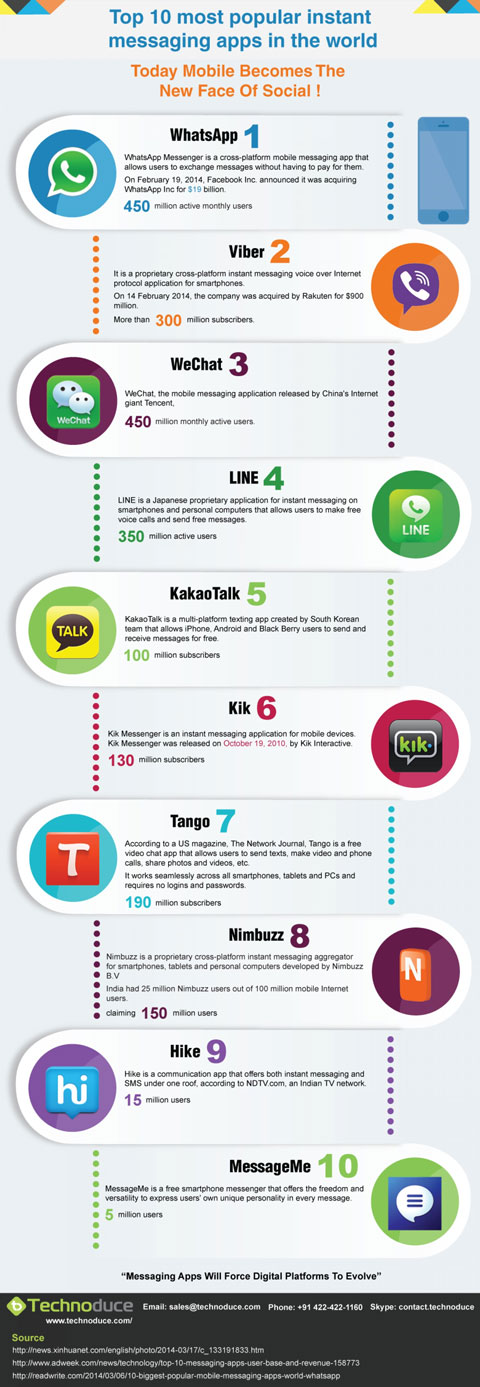
In the same month, Facebook updated both its iOS and Android apps with a new collage design that enlarges user photos that have received the most likes.
Taking a page from Snapchat and Instagram, without going the wholly ephemeral route Snapchat takes, Facebook is betting that a stronger emphasis on photos could make those two platforms less appealing. Look for more mobile-focused changes to come from Facebook!
Key Takeaways
The trend toward consumption of content through mobile devices hasn't left Facebook behind.
Facebook will keep creating more mobile-friendly features to stay competitive with the newest platforms that appear regularly.
#4: Facebook First for Social Logins
According to social registration tools creator Janrain's Social Logins Trend for Q3 2014, Facebook authenticated almost 50% of all social logins. Considering the other 50% of logins came through five separate social networks (and the category “other,” for a total of six), it's clear that Facebook is the social login leader by a long shot.
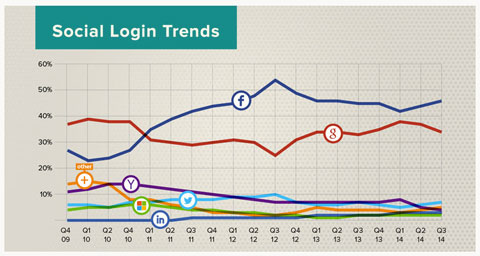
The convenience the social login–using consumer enjoys is more than matched by the benefits the website reaps when employing social media logins—making it too convenient for consumers to ever give up.
Consumers logging in with their social media identities are far less likely to abandon the registration process, allowing websites to gather more email addresses and increasing conversion rates. Neil Patel explains how to increase your conversion rate with social logins here.
The study authors at Janrain report that Facebook kept itself in front of consumers by convincing companies like Spotify and Pandora to utilize the Facebook social login. Conditioned on those music sites, consumers defaulted to Facebook social login on other sites as well.
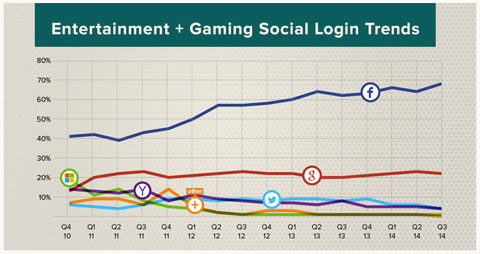
The study authors at Janrain credit Facebook for maintaining market share by creating partnerships with content creators patronized by the 95 million–strong Millennial audience. They conclude that “Facebook's value to consumers as a social login provider shows no signs of declining.”
Key Takeaways
Facebook is adept at utilizing strategic partners to keep itself relevant and in front of consumers.
Facebook's push to be the social login of choice in music, gaming and entertainment industries indicates its dedication to mobile—the platform entertainment consumers utilize most.
#5: Facebook Ads Boost Email Offers
In October 2014, Facebook and partner Salesforce Marketing Cloud published the results of a study examining the effectiveness of email outreach alone versus email outreach combined with exposure to a Facebook ad. This study involved an undisclosed leading U.S. retailer that sent an offer to 565,000 recipients.
Email subscribers who both opened their email AND were exposed to the Facebook ad were 22% more likely to make a purchase.
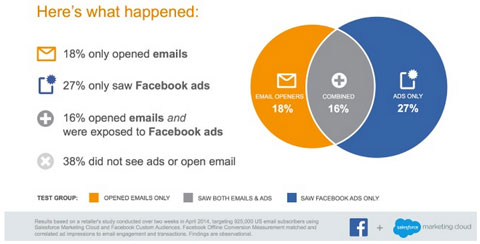
Considering that the unnamed retailer also saw reach rise by 77% when utilizing the Facebook ad, the combination of Facebook ad and email outreach proved arguably worthwhile.
Digital marketing companies constantly mix and remix cocktails of marketing tools to create the highest return. As reported in eConsultancy’s Email Marketing Consensus 2014, email marketing delivered the highest ROI yet again for the eighth year in a row when compared to PPC, search, social media, content marketing and mobile marketing.
Key Takeaway
You can bet marketers are going to do what they can, including using a Facebook ad, to spur this consistent workhorse of email marketing even farther.
What do you think? Will these statistics give you more firepower to convince a client or supervisor that Facebook, the 10-year-old “grandpa” of social media, can increase brand awareness, visibility, conversion and even email marketing return on investment well into 2015? Leave your comments or questions in the box below!
Attention Agency Owners, Brand Marketers, and Consultants

Introducing the Marketing Agency Show–our newest podcast designed to explore the struggles of agency marketers.
Join show host and agency owner, Brooke Sellas, as she interviews agency marketers and digs deep into their biggest challenges. Explore topics like navigating rough economic times, leveraging AI, service diversification, client acquisition, and much more.
Just pull up your favorite podcast app, search for Marketing Agency Show and start listening. Or click the button below for more information.

